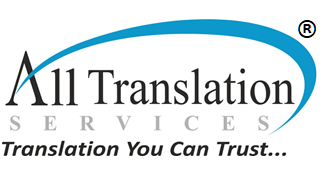How to ensure good quality in translation if you are not bilingual?
Translation matters the most when you deal with foreign clients or seeks medical treatment from abroad.
But what if you or your employee is not bilingual? How you will ensure a quality translation of your source text. After all it very necessary to know whether the service you are receiving is worthwhile.
You would be thinking that one cannot improve the quality of a translated source text without knowing the other language. Well, it is not true, because the write-up has covered up for few tips to ensure quality translation even if you are not bilingual. Please read them carefully.
Efficient formatting
Use proper formatting tools in word processor. Sometimes, it annoys when you receive a clumsily formatted translated document for your order. This indicates towards a bad quality of the translation. A good translator should use consistent font sizes or hire desktop publishing professionals to help them fix the formatting of the document after the translation.
Although, formatting of translation varies for different translated documents owing to their alphabets. Sometimes, some specific language styles becomes more or less wordy in comparison with their original counterparts, resulting in improper layout of a document.
Therefore, it is essential to use consistent formatting tools and methods to enhance the quality of your translated document, else you can always request for rework or changes.
Compatible terminology
Although, maintaining consistent terminology is another aspect of ensuring quality translation of your source document. It means you should not use multiple terms depicting same meaning.
There should only one term in the whole text. Similarly, word choice is also a vital tool of quality translation process. The words that you choose to replace in a document should always be simple and easy to understand.
Do not use words that are difficult to spell correctly. The easier your language will be the better your audience or client will connect with you.
Moreover, the growing use of translation methods and translators in an organization also dominates an expert to use consistent terminology in his/her source documents. It helps the business and clients to form habit of same pattern and concepts to deal with the final product.
Language wise phrasing
Language phrasing is a major component in good translation. It means when you translate a document for audience of any other country say Canada, you should always use the language or the phrases that are familiar to them. It can include specific idioms, references, sentence structure as per the target language, country and culture.
Good vocabulary
Good vocabulary as basic requirement in quality translation won’t surprise you. Therefore, it is worth considering an error free translation to improve the approach of your translated document. Although, a professional translator or as a reader it is essential to know the ins and outs of correct grammar document and if need any changes.
Bottomline
A quality translation in a source document that adds value to your vision. Often grammar error, improper formatting, false language phrasing and inconsistent terminology results in poor quality of the inserted text.
Thus, one can always follow the above tips to ensure the quality of your translated document, even if you are not bilingual, as all the components are of paramount importance in an improved transcribed information.
